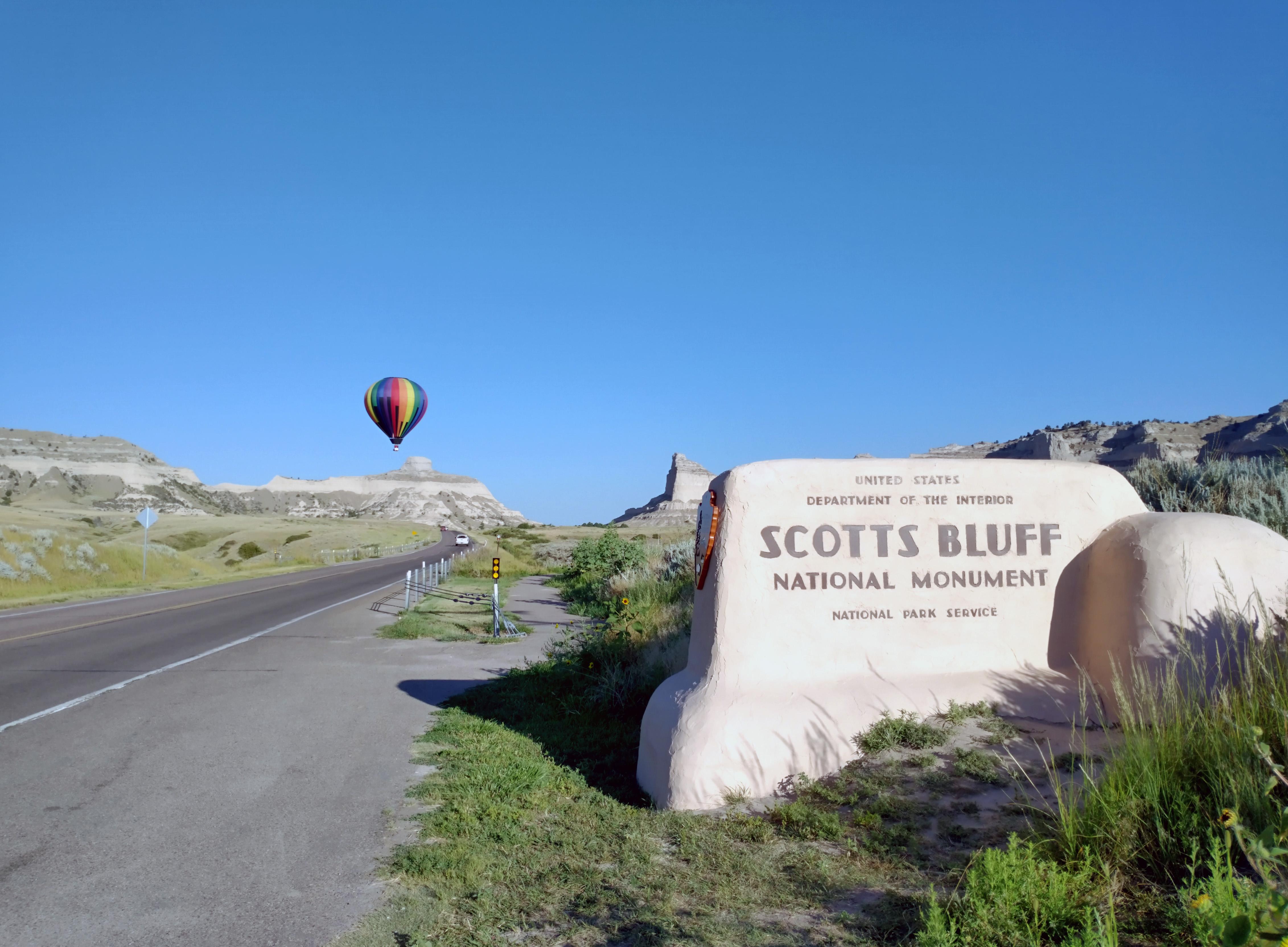
Thousands of covered wagons rolled by Eagle Rock in the mid nineteenth century.

Scotts Bluff as seen from the north side of the North Platte River

A hot air balloon is seen at the east entrance to Scotts Bluff National Monument.

Early morning is a great time to explore Scotts Bluff National Monument.

An inversion creates the feeling of walking on the clouds at the summit of Scotts Bluff.
Physical Address:
190276 Old Oregon Trail
Gering, NE 69341
Mailing Address:
P.O. Box 27
Gering, NE 69341
contact-details
Phone Number: 3084369700 Voice
Phone Number: 3084367611 Fax
Email Address: scbl_ranger_activities@nps.gov
Description:
Fees
Entrance Fees
Entrance Passes
Towering 800 feet above the North Platte River, Scotts Bluff has served as a landmark for peoples from Native Americans to emigrants on the Oregon, California and Mormon Trails to modern travelers. Rich with geological and paleontological history as well as human history, there is much to discover while exploring the 3,000 acres of Scotts Bluff National Monument.
park designation:National Monument
Directions:
Visitors traveling east-west on Interstate 80 can exit at Kimball, Nebraska and drive 45 miles north on Nebraska Highway 71. Follow National Park Service signs three miles west of Gering, Nebraska to Old Oregon Trail Road. Turn west onto Old Oregon Trail Road and follow it approximately 2 miles to the monument visitor center on the right. Visitors travelling along the North Platte River using US Highway 26 or Nebraska Highway 92, should follow the National Park Service signs.
For detailed directions, please visit this link.
Directions
Operating Hours:
Scotts Bluff National Monument
Scotts Bluff National Monument is located in the Mountain Time Zone. These hours are for the grounds, picnic area, and trails only. The hours for the Visitor Center and Summit Road are different. See below for Summit Road and Visitor Center hours.
Scotts Bluff Summit Road
The Scotts Bluff Summit Road is a 1.6-mile drive to the summit of Scotts Bluff. Be aware that the road may close periodically due to weather conditions or rockslides. For the latest Summit Road conditions contact Scotts Bluff National Monument at (308) 436-9700. Entry by motorized vehicles during the fall/winter/spring seasons (September through late-May) is permitted from 9 a.m. until 4:00 p.m. Mountain Time.
Exceptions:
- Summit Road Fall/Winter/Spring Hours (early September though late May) (September 1, 2025 - May 23, 2026)
- Thanksgiving Day Closure (November 27, 2025 - November 27, 2025)
- Christmas Day Closure (December 25, 2025 - December 25, 2025)
- New Year's Day Closure (January 1, 2026 - January 1, 2026)
Weather Information:
Summers at Scotts Bluff are generally dry and high temperatures are usually in the 80's and 90's, although they can reach above 100 on occasion. Hikers are strongly advised to carry water. Winter daytime temperatures are usually in the 40's or low 50's, with overnight lows below freezing and, on occasion, below 0 degrees Fahrenheit. Although it can be windy any time of the year, spring is the windiest season.
Activities

Arts and Culture

Cultural Demonstrations

Auto and ATV

Scenic Driving

Biking

Food

Picnicking

Guided Tours

Self-Guided Tours - Walking

Hiking

Backcountry Hiking

Front-Country Hiking

Living History

Junior Ranger Program

Park Film

Museum Exhibits

Shopping

Bookstore and Park Store

Arts and Culture

Cultural Demonstrations

Auto and ATV

Scenic Driving

Biking

Food

Picnicking

Guided Tours

Self-Guided Tours - Walking

Hiking

Backcountry Hiking

Front-Country Hiking

Living History

Junior Ranger Program

Park Film

Museum Exhibits

Shopping
